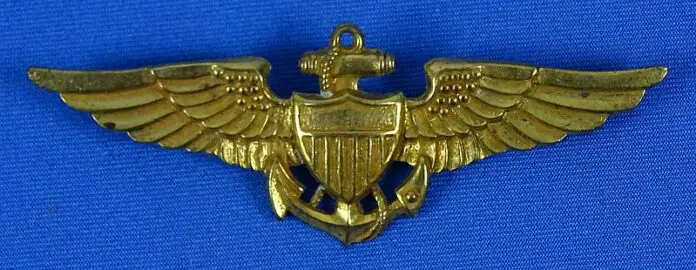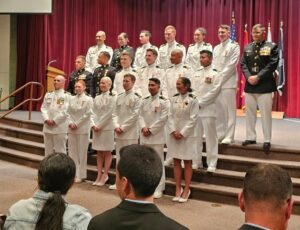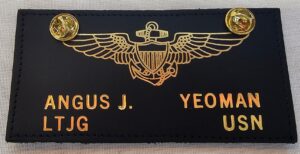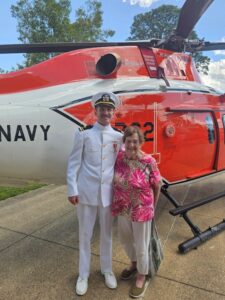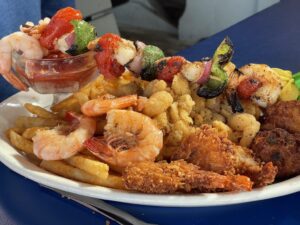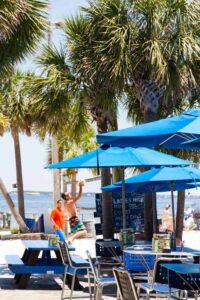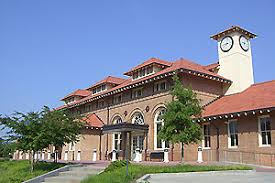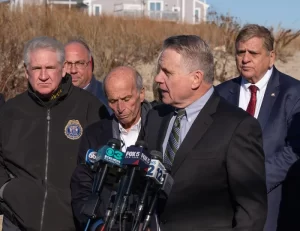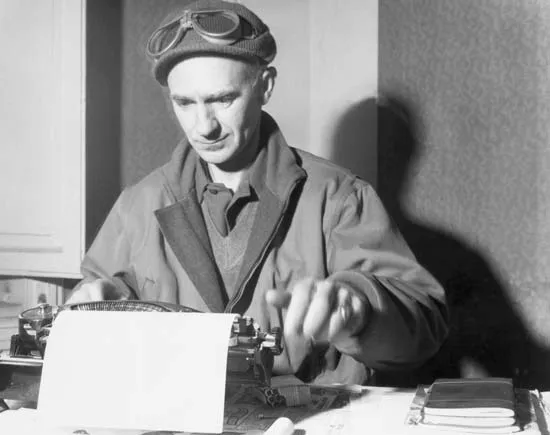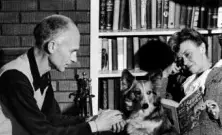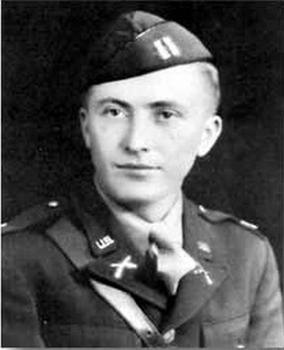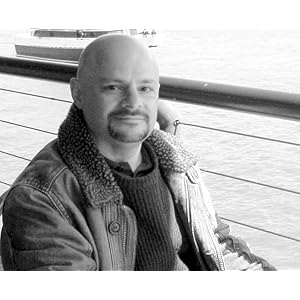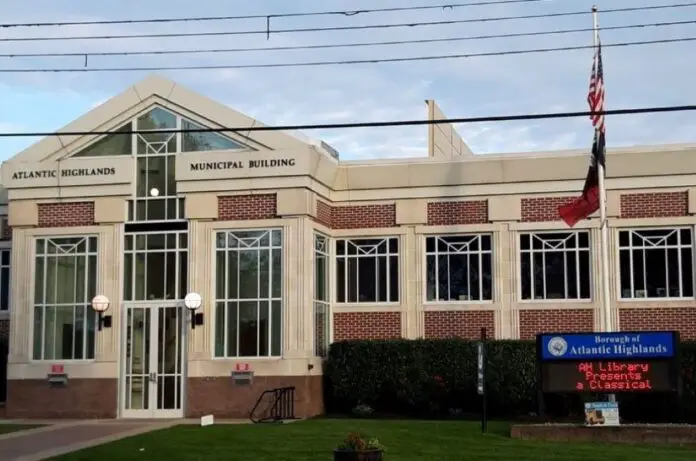When celebrating the incredible achievement of 15 young officers in the Navy, Marine Corps and Coast Guard becoming Naval aviators at NAS Whiting Field in Pensacola, Florida, it takes more than one ceremony. Wings
There were two ceremonies to honor the 15 new aviators, who now number 37873 the total number of Navy, Marine or Coast Guard aviators who have ever achieved that title since Commander Theodore Gordon “Spuds” Ellyson first earned it for his achievement in 1911 and was given Wings Number One as a naval aviator.
Eleven of the 15 officers who were winged in ceremonies this year participated in the first of the two ceremonies, held on the Naval Air Station, The Blessing of the Wings.
Each of the officers and their guests were at the rituals and greeted by LT. Latoya Smith, the Naval Chaplain at Whiting Field, who introduced Monsignor Michael Reed of the Catholic Diocese of Pensacola-Tallahassee. Monsignor Reed is a chancellor in the Office of the Bishop and Director of the diocesan office of Sacraments and Worship.

Chaplain. Smith read from the Book of Isaiah in the Old Testament the passage that reminded the officers that “Even youth grow tired and weary and young men stumble and fall, but those who hope in the Lord will renew their strength; they will soar on wings like eagles..”.
Monsignor read the Good Shepherd verses from the New Testament’s Book of St. John, “there will be one flock, one shepherd. For this reason the Father loves me, because I lay down my life that I may take it up again….This charge I have received from my Father.”
The congregation joined in readings asking God to “Show me your ways…teach me your paths…guide me in your truth…and teach me you are my God and my hope is in You all day long.”
Each of the officers then held their new gold wings in hand, as Monsignor Reed went to each, blessed the wings and offered each new aviator congratulations and prayers for safety and protection in their obligations as helicopter pilots
This first ceremony closed with a singing of the Navy hymn, “Eternal Father”, written by William Whiting in 1860 and inspired by its recitation of dangers of the sea. It is a song of thanksgiving for the mercy of God for His rescues from perils of the sea. For the aviators, the verse most poignant was “Lord, guard and guide the ones who fly through the great spaces in the sky. Be with them always in the air, In darkening storms or sunlight fair.
O hear us when we lift our prayer for those who peril in the air>”
Aviators honored in this ceremony were Marine1st Lt. Kaitlin R. Warnke of Corpus Christi, Texas and 1st Lt. Derian Insani of Rockwall, Texas, Coast Guard Lt. (jg) Michael Gilmore, Jr. of Santa Clarita, California, and Navy Lieutenants (jg) Chloe K. Brown, Corpus Christi, Tucker W. Brown, Creedmoor, North Carolina, Breanna Duncan, Bealeton, Virginia, Daniel Farias, Laredo, Texas, Derian Insani, Rockwall, Texas, Kyle A. Lingis, Pasadena, Maryland , Oscar E. Prioleau III, Atlanta, Georgia, Benjamin Wallace, Oakton, Virginia, Kaitlin R. Warnke, Corpus Christi, Texas, and my Grandson, Angus J. Yeoman, Bayville, New Jersey
